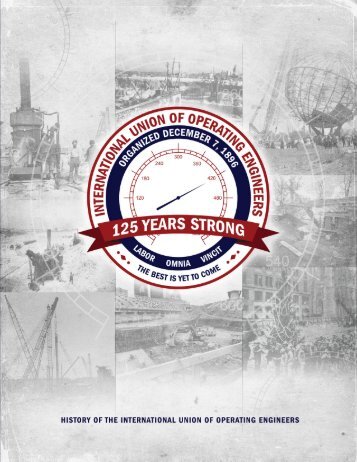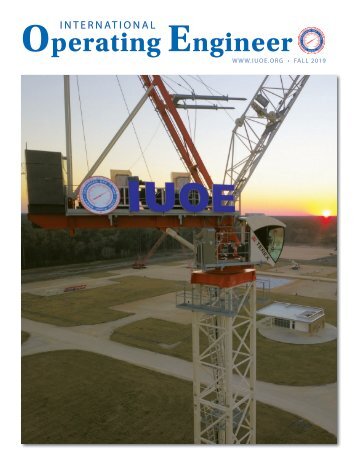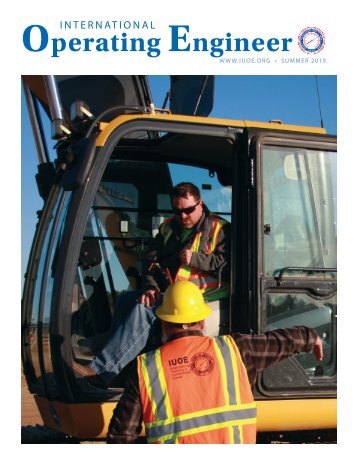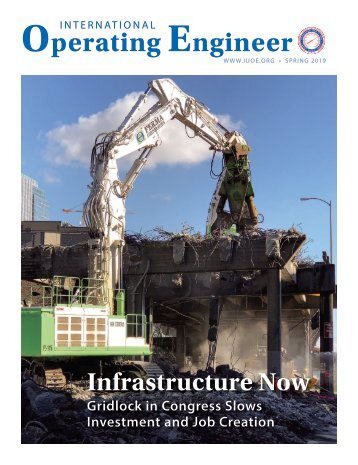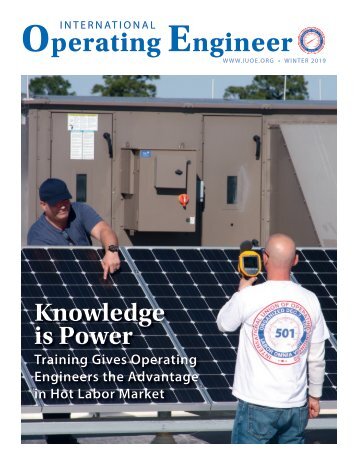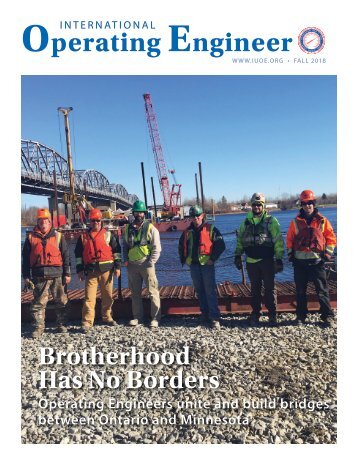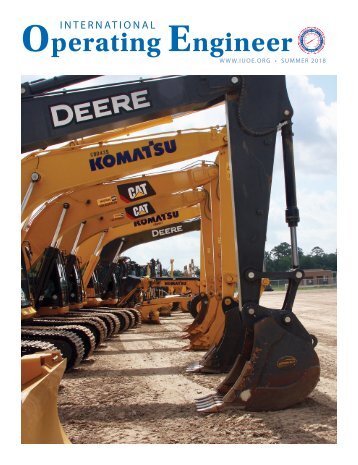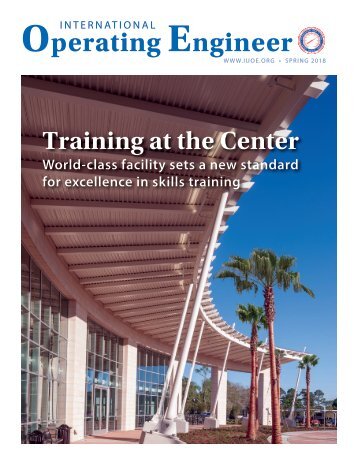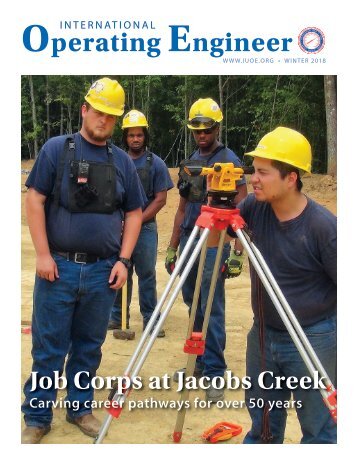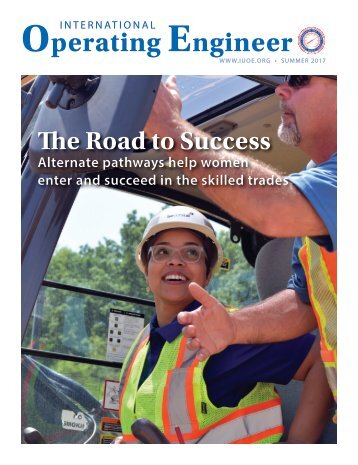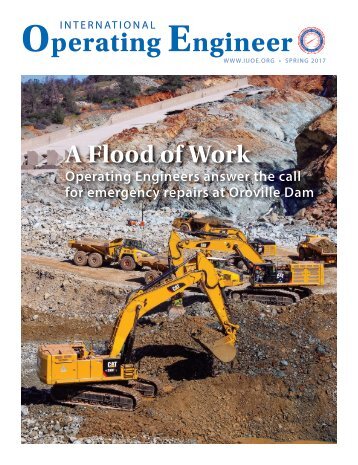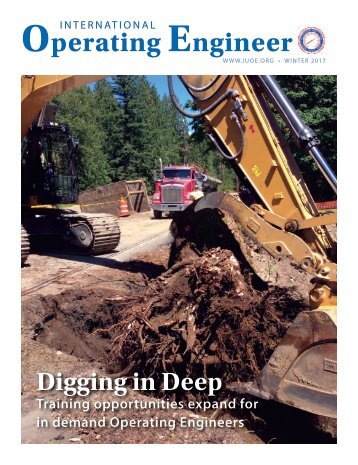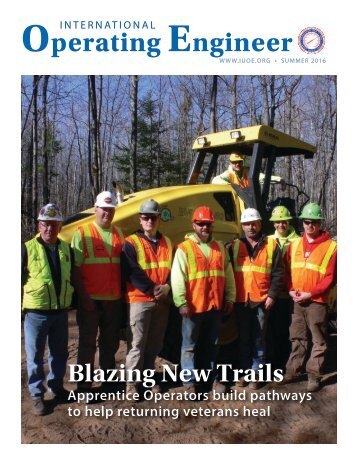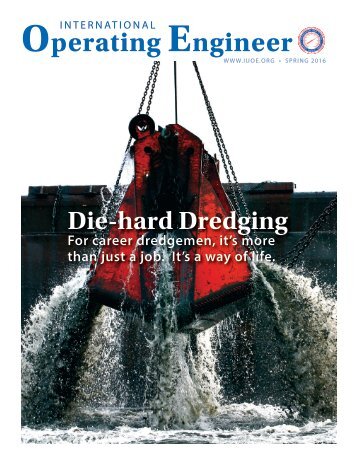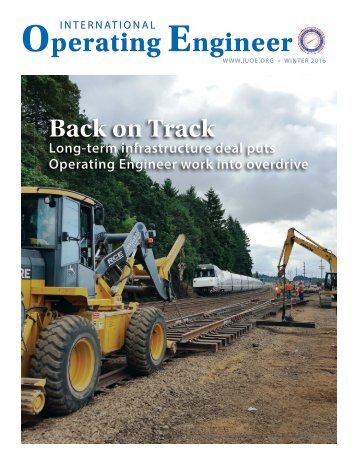International Operating Engineer - Spring 2016
- Text
- Workers
- Trump
- Operating
- Engineer
- Silica
- Donald
- Exposure
- Iuoe
- Clinton
- Republican
Feature DECKHAND JAMES
Feature DECKHAND JAMES FAAS has many tattoos, but two of the most prominent ones are of a bucket dredge on his right hand and a cutter-head on his left. He’s worked on rigs using both during his 14-year career in dredging, as they are used to deepen shipping channels and remove underwater debris. However, the tattoos are more than just body art; they are an outward symbol of how working in this trade becomes so much a part of those who do it. “I can’t think of doing anything else,” said Leverman Steven Pryor. He’s been an Operating Engineer working on dredging rigs for 29 years. Growing up on the coast in Eureka, Calif., he was only eight years old when he decided he was going to work on the water. Today, he has no regrets in making that career choice. “I didn’t get a college degree, but I’ve had a great career that fed my family,” he said. His family includes “two-andthree-quarters grandkids” (one was still on the way at the time of this writing), and two sons, one of which, like Pryor, works on the water for Dutra. Not only do dredgemen travel and work long hours to support their families, but many work alongside family members. Even when there are no direct family connections, there is a distinct family feel on these rigs. Crewmembers often gather in the kitchen or around the grill to prepare lunch and jokingly argue about who’s been raiding the food in the pantry. They poke fun at each other the way siblings do, a sign of how comfortable they become on these floating jobsites. Being comfortable around your fellow crewmembers doesn’t just make going to work on a dredge easier; it’s vital to the safe functioning of the rig. The dangers of working on the water, such as climbing up wet steps and ladders, being around moving parts and equipment, stepping over gaps between rigs and boats or over lines and ropes, means crewmembers have to constantly be mindful of their own safety and that of their coworkers. For crews working in the yard, there are different dangers and challenges, including those that come with welding, working with electrical lines and having to fabricate parts in the shop for equipment built decades ago. [right] The crew aboard R. E. Stait’s DB Palomar includes, from left, Deckhand David Koue, Deck Engineer Fritz Fields, Deckhand Felix Castro, Leverman Bill Kombrink and Capt. Greg Center. [article & photos] by John O. Matos, IUOE Local 3 Die-hard Dredging For career dredgemen, it’s more than just a job. It’s a way of life. 12 INTERNATIONAL OPERATING ENGINEER SPRING 2016 13
- Page 1 and 2: i n t e r n at i o n a l Operating
- Page 4: International Operating Engineer (I
- Page 8: HAZMAT Deadly Dust: OSHA’s New Si
- Page 14: Feature “Some of these rigs are W
- Page 18: Election 2016: Special Series “I
- Page 22: Canadian News Massive Pipeline Repl
- Page 26: Union Death Benefit James J. Stanca
Inappropriate
Loading...
Mail this publication
Loading...
Embed
Loading...
International Operating Engineer
HEADQUARTERS
INTERNATIONAL UNION OF OPERATING ENGINEERS (IUOE)
1125 17th Street, NW
Washington, DC 20036
202 429-9100
CONTACT US
Send us an email here.
©2010 International Union of Operating Engineers. All Rights Reserved.|Terms Of Use|Privacy Statement|Sitemap

